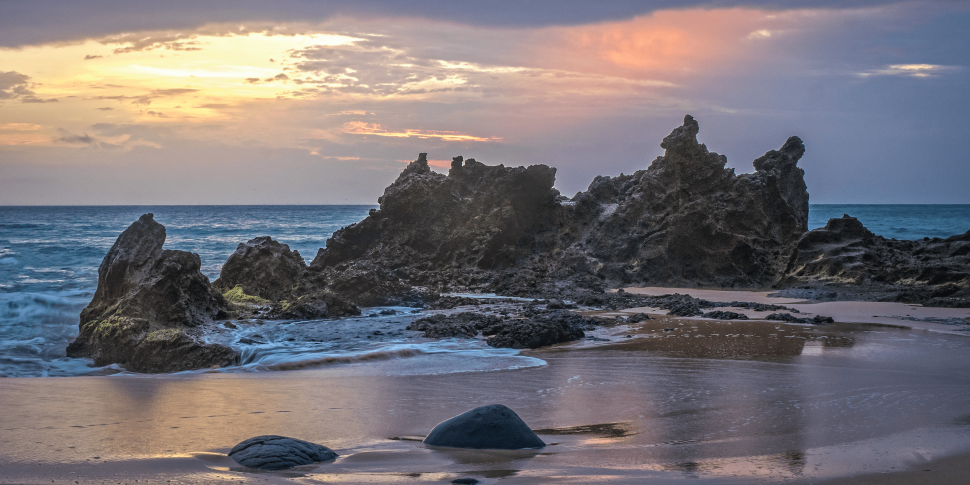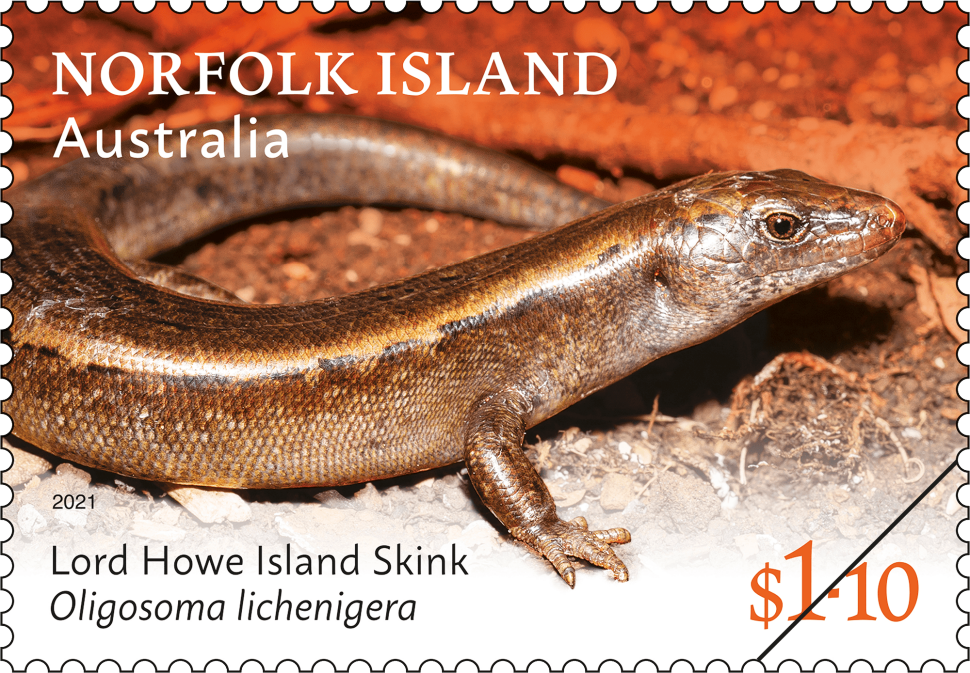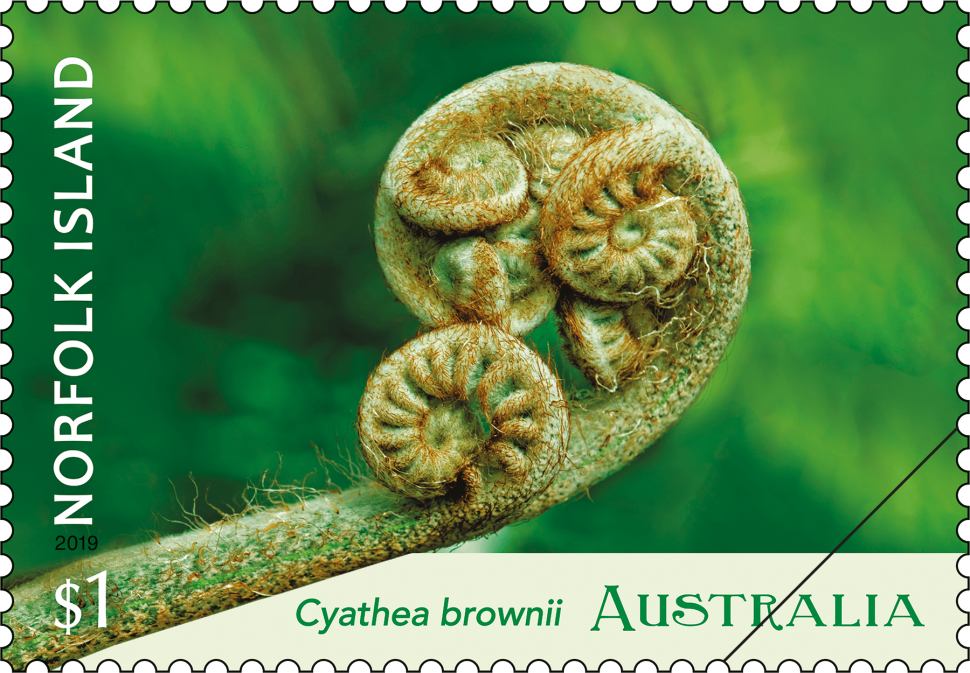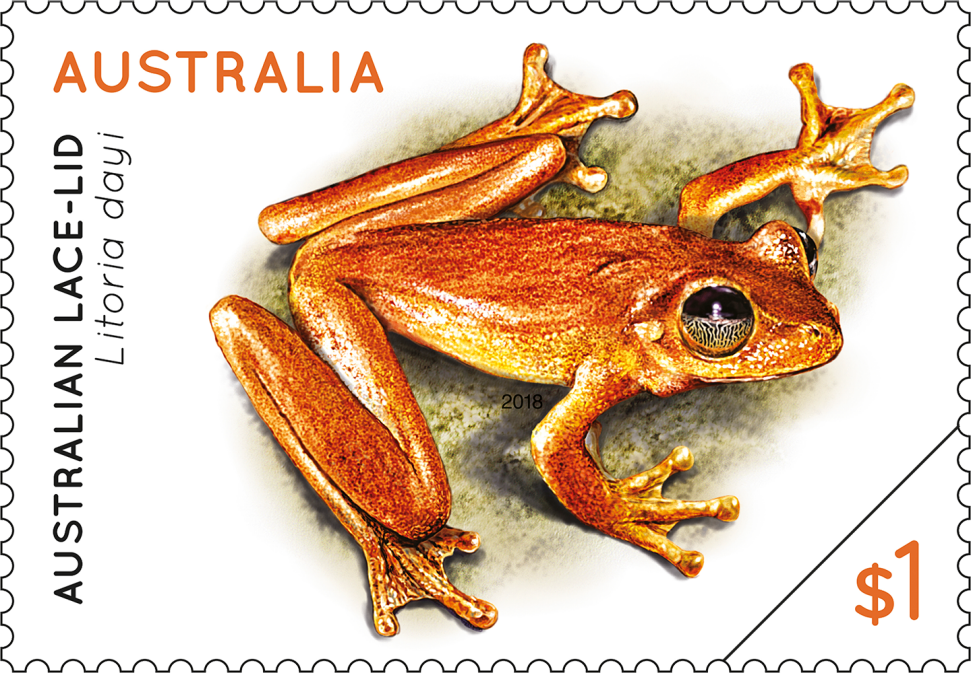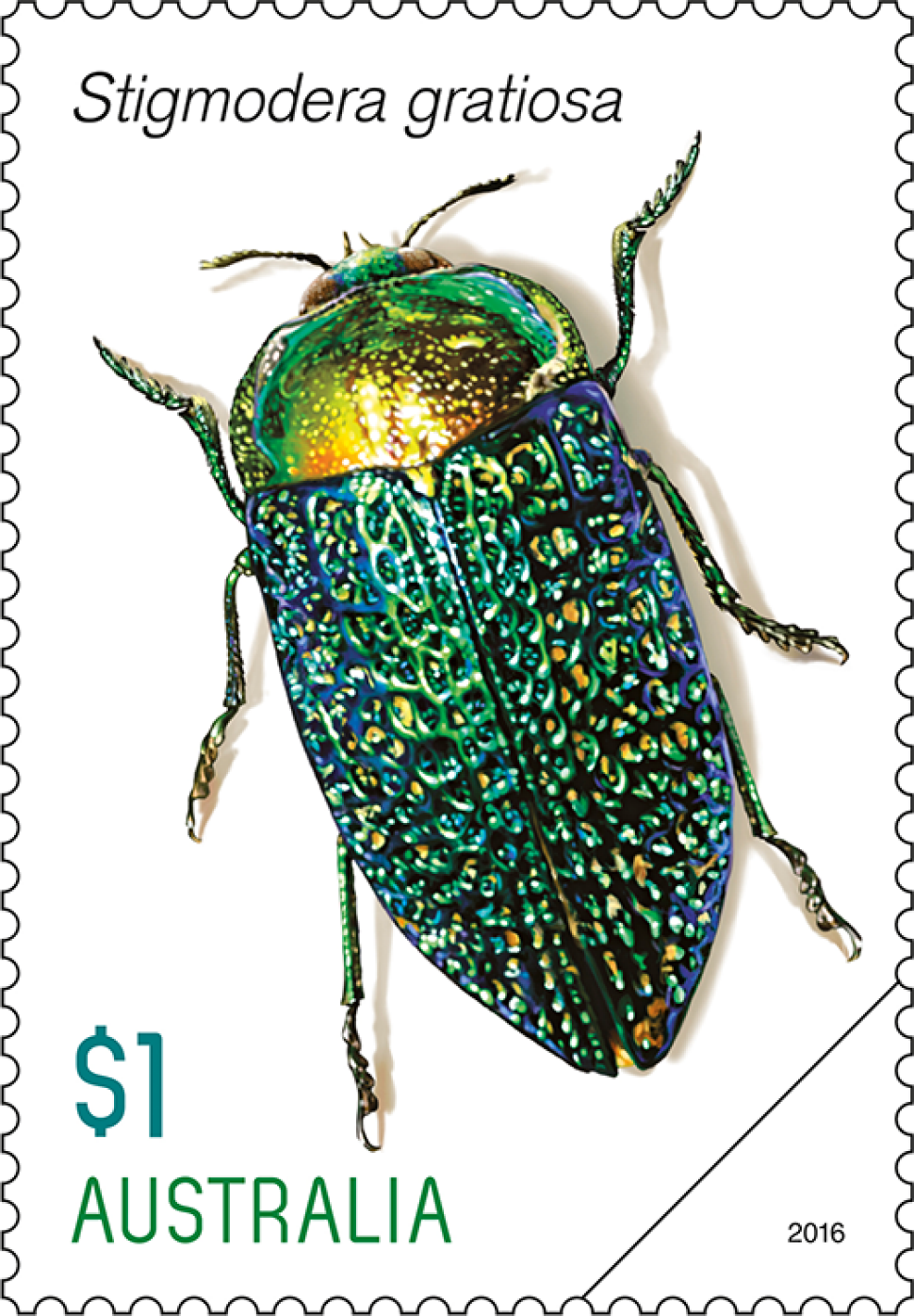Overview
Norfolk Island lies around 1,600 kilometres north-east of Sydney, in the South Pacific Ocean. Besides the main island, home to a population of nearly 2,000, the Norfolk group comprises the uninhabited Phillip and Nepean Islands, as well as numerous small rocky islets.
This remote oceanic territory is home to two native species of land reptile, both of which are also evident on Lord Howe Island, where they were first described in the late 19th century. They are the Lord Howe Island Skink (Oligosoma lichenigera) and Lord Howe Island Gecko (Christinus guentheri), which are listed as vulnerable in state and federal legislation and are on the International Union for the Conservation of Nature (IUCN) Red List. Neither species inhabits the Norfolk’s main island, probably due to the presence of Polynesian and Black Rats, but both are found on Phillip Island; the gecko has also been observed on Nepean Island and the rocky islets of Moo’oo Stone, Green Pool Stone and Bird Rock. The main threats to both species are rats, cats and the introduced Asian House Gecko.
Technical specifications
- Issue date
- 9 February 2021
- Issue withdrawal date
- 31 August 2021
- Denomination
- $1.10 x 1, $2.20 x 1
- Stamp design
- Jason Watts, Australia Post Design Studio
- Product design
- Jason Watts, Australia Post Design Studio
- Paper: gummed
- Tullis Russell
- Printer
- EGO
- Printing process
- Offset lithography
- Stamp size (mm)
- 37.5 x 26
- Minisheet size (mm)
- 135mm x 80mm
- Perforations
- 14.6 x 13.86
- Sheet layout
- Module of 50
- FDI Postmark
- Norfolk Island NSW 2899
- FDI withdrawal date
- 9 May 2021
Described on Lord Howe Island in 1874 but first recorded in the Norfolk group in 1978, the Lord Howe Island Skink grows to around eight centimetres in length and is rich metallic bronze to olive in colour, with small brown flecks along its body. It often has brown spots on its head, a pale golden stripe from above its eyes to the base of the tail. This nocturnal skink occurs in various habitats, from bare cliffs to coastal dunes to dense vegetation and root mats, where it can forage and take shelter. The stamp photograph is by David Fischer.
First described on Lord Howe Island in 1885, the pale olive-grey to dark-brown-coloured Lord Howe Island Gecko is heavily built and medium-sized, growing to around eight centimetres in length. This smooth-scaled reptile and is peppered with darker spots and a series of W-shaped markings that fade towards its flanks. This nocturnal gecko occurs in closed forest, low open woodland, tussock grassland and rocky islets, and seems to prefer protected rocky areas. The stamp photograph is by Henry Cook.
Shop our stamp collectables
Set of stamps:
This set of stamps contains the two stamps from the Norfolk Island: Lizards stamp issue.
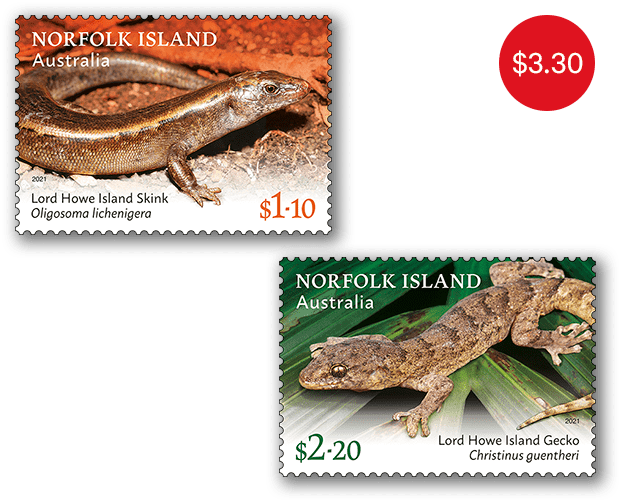
Minisheet:
The Norfolk Island: Lizards minisheet consists of the two stamps from the issue incorporated into a miniature stamp sheet.
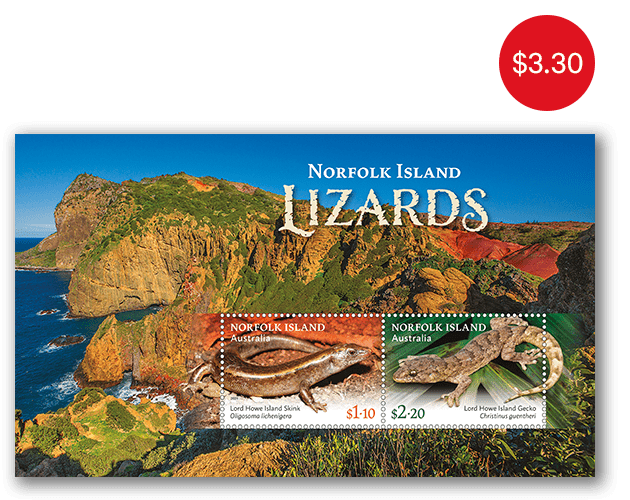
Gutter strip:
The gutter strip consists of 10 x $1.10 Lord Howe Island Skink stamps from the Norfolk Island: Lizards stamp issue

Gutter strip:
The gutter strip consists of 10 x $2.20 Lord Howe Island Gecko stamps from the Norfolk Island: Lizards stamp issue
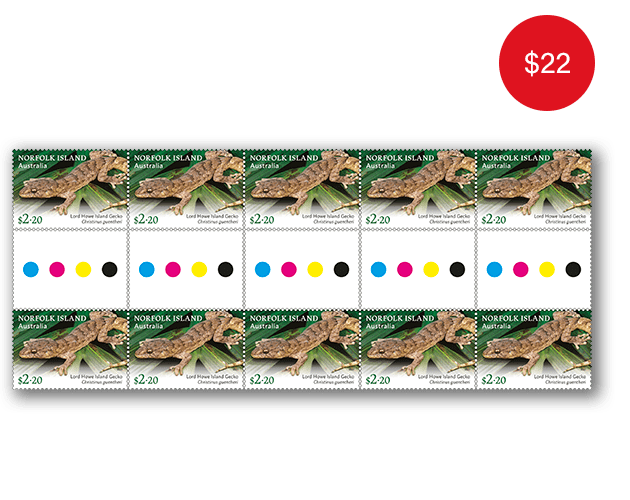
- Set of stamps
- Minisheet
- Gutter strip
- Gutter strip
Additional products:
- Pictorial Envelope for the Norfolk Island: Lizards Stamp Issue
- First Day Norfolk Island: Lizards Gummed Stamps Cover
- First Day Norfolk Island: Lizards Minisheet Cover
This content was produced at the time of the stamp issue release date and will not be updated.
